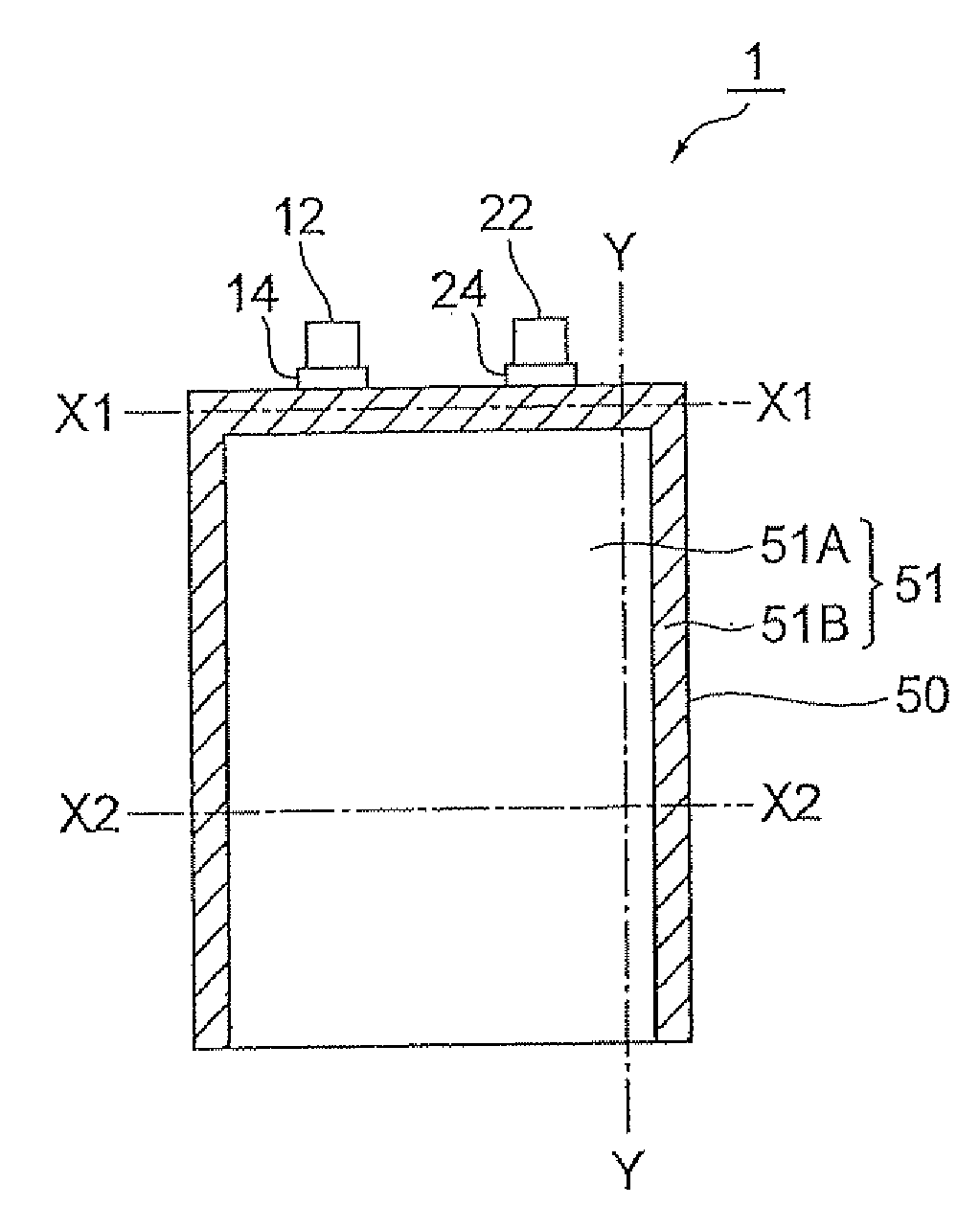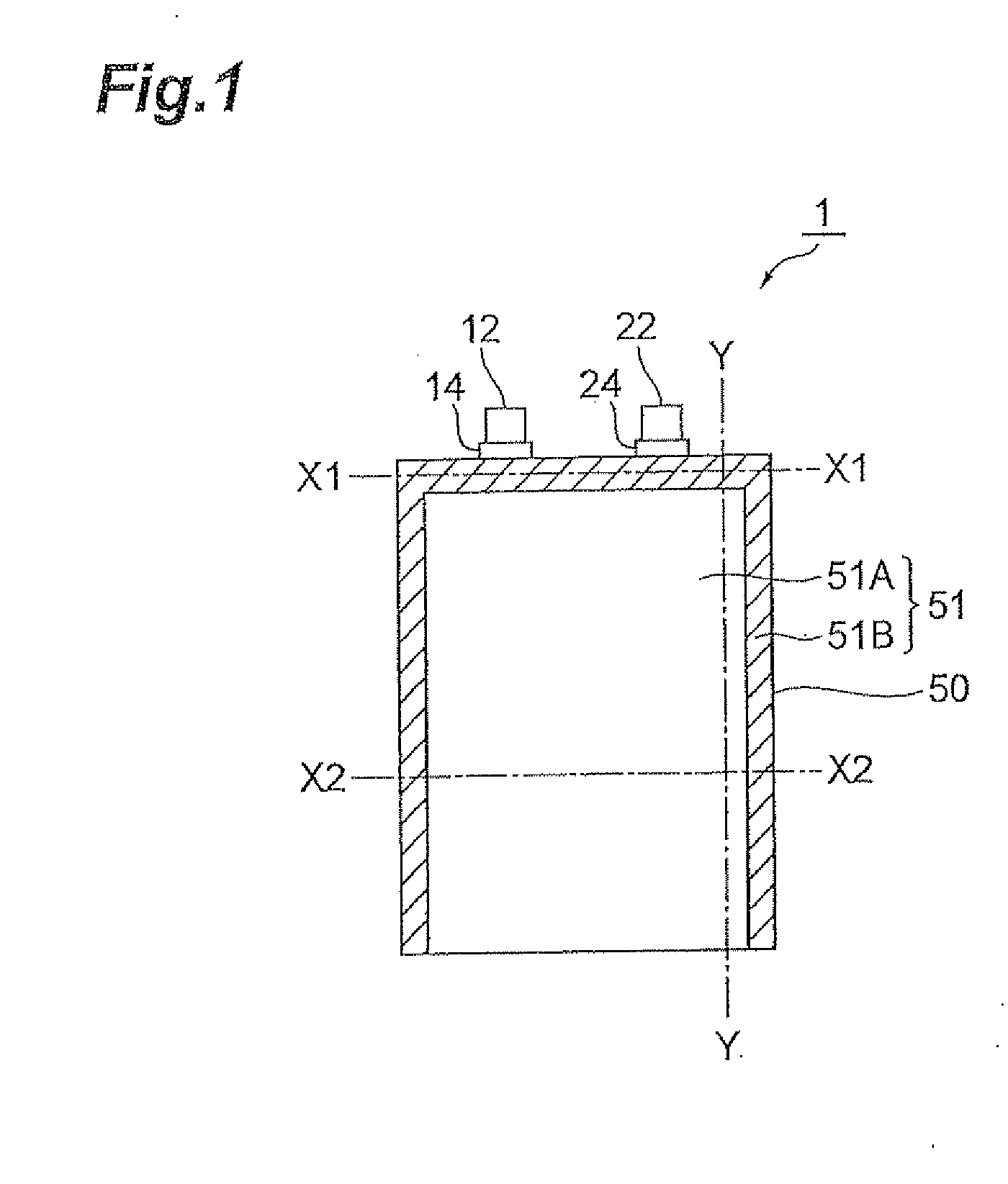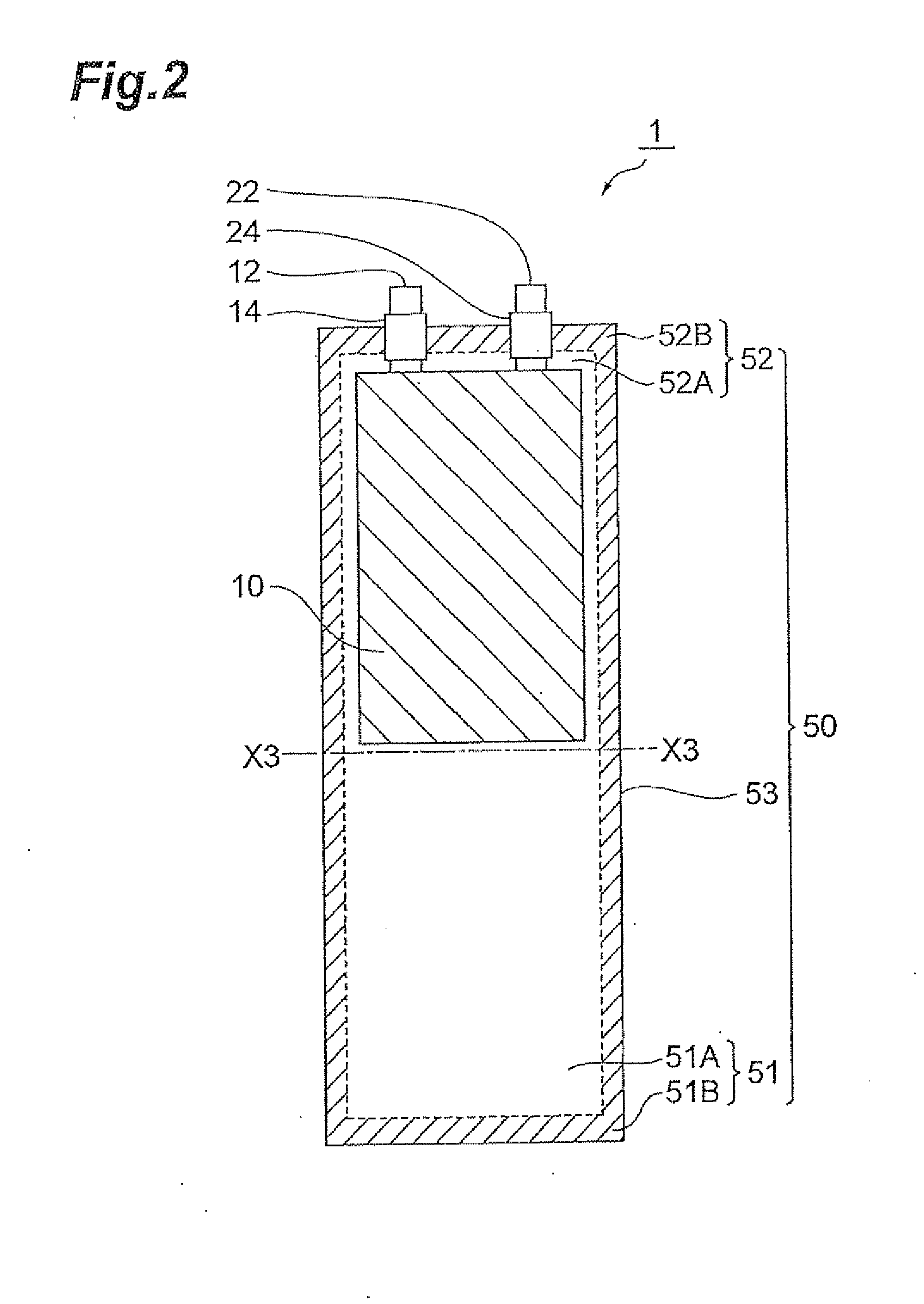Active material and positive electrode and lithium-ion second battery using same
a positive electrode and active material technology, applied in the field of active materials and positive electrodes and lithium-ion secondary batteries, can solve the problems of reducing the capacity of charging and discharging, and it is harder to obtain favorable li-ion conductivity, and achieves favorable rate characteristics, sufficient capacity, and favorable cycle characteristics.
- Summary
- Abstract
- Description
- Claims
- Application Information
AI Technical Summary
Benefits of technology
Problems solved by technology
Method used
Image
Examples
example 1
Making of Active Material
[0099]An aqueous H3PO4 solution in which 23.08 g of H3PO4 were dissolved in 500 g of water was introduced into a 1.5-L autoclave container, and V2O5 (18.37 g) was gradually added thereto. After completely adding V2O5, the container was hermetically closed, and reflux was carried out for 16 hr at 95° C. with stirring at 200 rpm. After completing the reflux, the container was once opened when its temperature dropped to room temperature, and LiOH.H2O (8.48 g) and C6H8O6 (7.13 g) were gradually added. Thereafter, the container was hermetically closed again and held at 160° C. for 8 hr. Thus obtained mixture was washed with about 300 ml of water added thereto. The washed product was heated at 90° C. for about 23 hr in an oven and then pulverized by high-speed rotary pulverization, thus yielding a gray powder.
[0100]Thus obtained powder was put into an alumina crucible and heated from room temperature to 550° C. in 45 min. After being heat-treated for 4 hr at 550° ...
PUM
| Property | Measurement | Unit |
|---|---|---|
| particle size | aaaaa | aaaaa |
| BET specific surface area | aaaaa | aaaaa |
| size | aaaaa | aaaaa |
Abstract
Description
Claims
Application Information
 Login to View More
Login to View More - R&D
- Intellectual Property
- Life Sciences
- Materials
- Tech Scout
- Unparalleled Data Quality
- Higher Quality Content
- 60% Fewer Hallucinations
Browse by: Latest US Patents, China's latest patents, Technical Efficacy Thesaurus, Application Domain, Technology Topic, Popular Technical Reports.
© 2025 PatSnap. All rights reserved.Legal|Privacy policy|Modern Slavery Act Transparency Statement|Sitemap|About US| Contact US: help@patsnap.com



